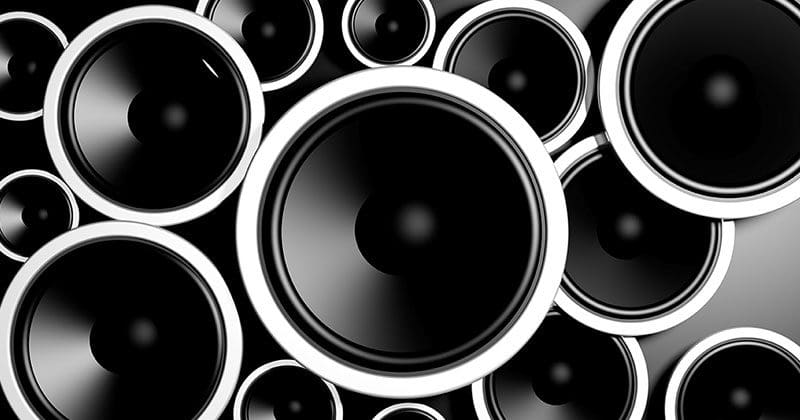If you compare car audio products from the last decade or so to those of the early years, you’ll quickly notice that amplifiers, speakers and subwoofers often aren’t as big as they used to be. Take the new Jeep Wrangler JL chassis as an example. While it used to use 6.5-inch woofers in the dash and the overheard soundbar, it now uses 4-inch speakers in these locations. We can’t for the life of us think of any good reason why Jeep would switch to a smaller driver for the latest models.
Speaker Size vs. Performance
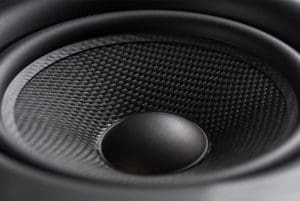 When it comes to designing car audio speakers, a speaker with a larger cone can move more air for a given amount of power from an amplifier and thus offer more efficiency. This larger cone and suspension assembly will also have a lower resonant frequency that allows it to produce more bass. Who wouldn’t want more efficiency and more bass from any audio system?
When it comes to designing car audio speakers, a speaker with a larger cone can move more air for a given amount of power from an amplifier and thus offer more efficiency. This larger cone and suspension assembly will also have a lower resonant frequency that allows it to produce more bass. Who wouldn’t want more efficiency and more bass from any audio system?
As a counterpoint, is there a drawback to larger-diameter speakers? Well, they do become more directional at higher frequencies and they typically don’t offer as much high-frequency output as their smaller counterparts. For OEM vehicle manufacturers, these limitations are easily overcome by adding a small midrange driver to the dash or the upper portion of the door. Once the output of the speakers is aligned in terms of arrival time (often called time-alignment) and the system is equalized to deliver flat frequency response, the woofer and twiddler (it’s not a tweeter or a midrange) can sound acceptable.
The Benefits of Big Car Audio Speakers
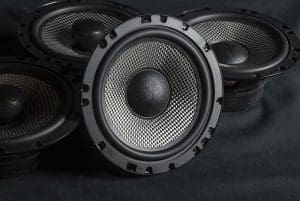 When used as a woofer, small speakers have a few significant limitations. In order to produce acceptable levels of midbass output, the speaker cone will need to move a great deal. As with any speaker, more cone excursion means more distortion (a concept we’ll touch on in another article). The result is reduced clarity, detail and accuracy from the audio system.
When used as a woofer, small speakers have a few significant limitations. In order to produce acceptable levels of midbass output, the speaker cone will need to move a great deal. As with any speaker, more cone excursion means more distortion (a concept we’ll touch on in another article). The result is reduced clarity, detail and accuracy from the audio system.
Depending on the speaker design, a small-diameter driver may use a smaller voice coil and subsequently have less thermal capacity, which results in it overheating and failing at a lower power level. This usually isn’t an issue when combined with a woofer of some sort, because the high-pass crossover point can be raised to reduce the amount of power sent to the speaker. Without a woofer, you can run into trouble quickly.
Small-Diameter Automotive Subwoofers
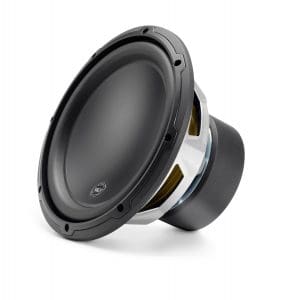 Given the choice of multiple small subwoofers or a single large driver, we’d suggest taking the larger option. As an example, we took at the look at the specifications for the popular JL Audio W3v3 series subwoofers. After some analysis in a spreadsheet that calculated the effective air displacement capability of each subwoofer based on its cone area and Xmax specification, we observed that a pair of 10W3v3 subwoofers has very similar cone area to a single 13W3v3. The single 13 has a cone area of 103.85 inches, while the pair of tens is 106.94 square inches. In terms of output capability, the 13-inch woofer has more excursion capability (0.61 inches vs 0.55 inches) for an increase in air displacement ability of 7% , even with its 3% deficit in surface area.
Given the choice of multiple small subwoofers or a single large driver, we’d suggest taking the larger option. As an example, we took at the look at the specifications for the popular JL Audio W3v3 series subwoofers. After some analysis in a spreadsheet that calculated the effective air displacement capability of each subwoofer based on its cone area and Xmax specification, we observed that a pair of 10W3v3 subwoofers has very similar cone area to a single 13W3v3. The single 13 has a cone area of 103.85 inches, while the pair of tens is 106.94 square inches. In terms of output capability, the 13-inch woofer has more excursion capability (0.61 inches vs 0.55 inches) for an increase in air displacement ability of 7% , even with its 3% deficit in surface area.
In the case of these subwoofers, JL Audio recommends that each 10 be used in a vented enclosure with a 1.25 cubic foot internal air volume, and much to our delight (for the purposes of this example), the 13-inch sub requires exactly twice that air volume at 2.5 cubic feet. From an enclosure perspective, there is little to no difference. They also happen to work with the same tuning frequency, meaning the required vent design can be similar, if not absolutely identical.
What about power? Well, for the pair of tens, each one is going to need to be driven with approximately its rated power (300 watts per subwoofer), and the 13 needs only be driven with a single 300-watt amp. You get a lot more electrical system efficiency from the single subwoofer.
What about Compact Amplifiers?
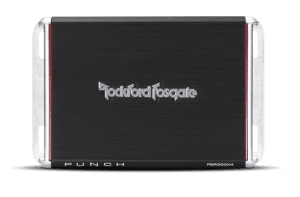 Wrapping up our discussion of size versus performance brings us to amplifiers. As we have outlined in the past in our article about compact amplifiers, there are definite drawbacks to using small amplifiers. First, they produce more background noise than their larger counterparts as shown in their signal-to-noise ratio specifications. These small amplifiers also have less heatsink mass and surface area, so they are more prone to overheating than their larger counterparts.
Wrapping up our discussion of size versus performance brings us to amplifiers. As we have outlined in the past in our article about compact amplifiers, there are definite drawbacks to using small amplifiers. First, they produce more background noise than their larger counterparts as shown in their signal-to-noise ratio specifications. These small amplifiers also have less heatsink mass and surface area, so they are more prone to overheating than their larger counterparts.
Yes, where space is limited, sometimes a small amp is your only choice, but given the option, we’d suggest using a physically large amp whenever possible. Other than physical space, bigger amplifiers will deliver a better listening experience.
The Complexity of Car Audio System Design
For those of you who want better performance from your car audio system, the Product Specialists at your local mobile enhancement retailer can help design a sound system upgrade that will deliver dramatically improved clarity and detail with smoother frequency response and more output capability. Drop by and talk to them about how to make your commute or road trip much more enjoyable.
